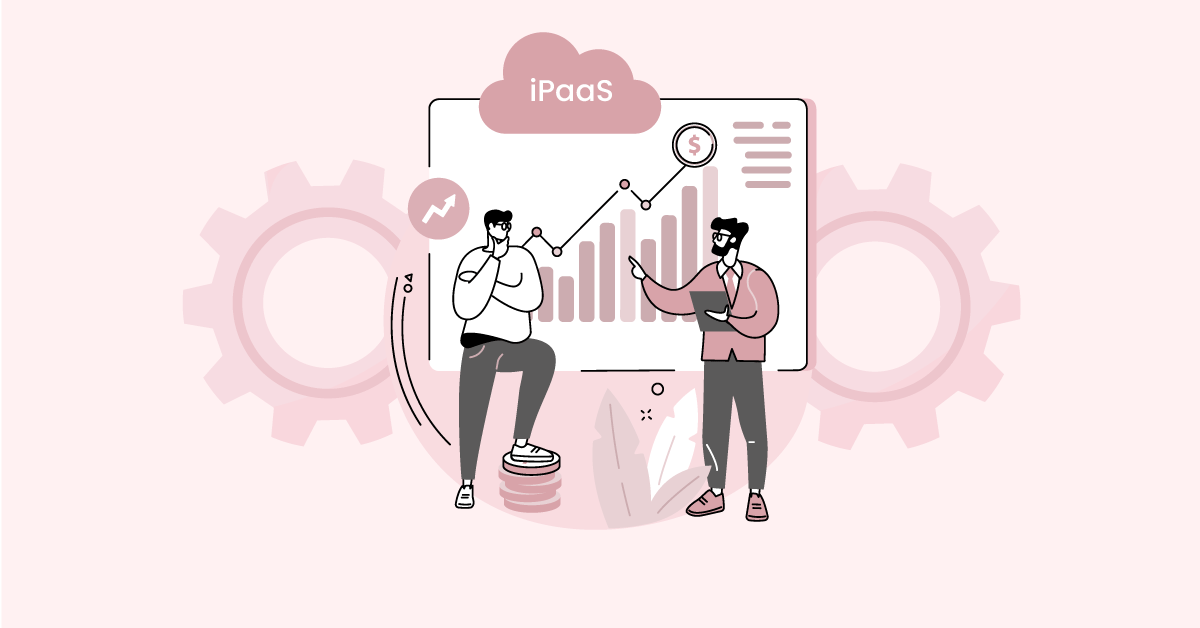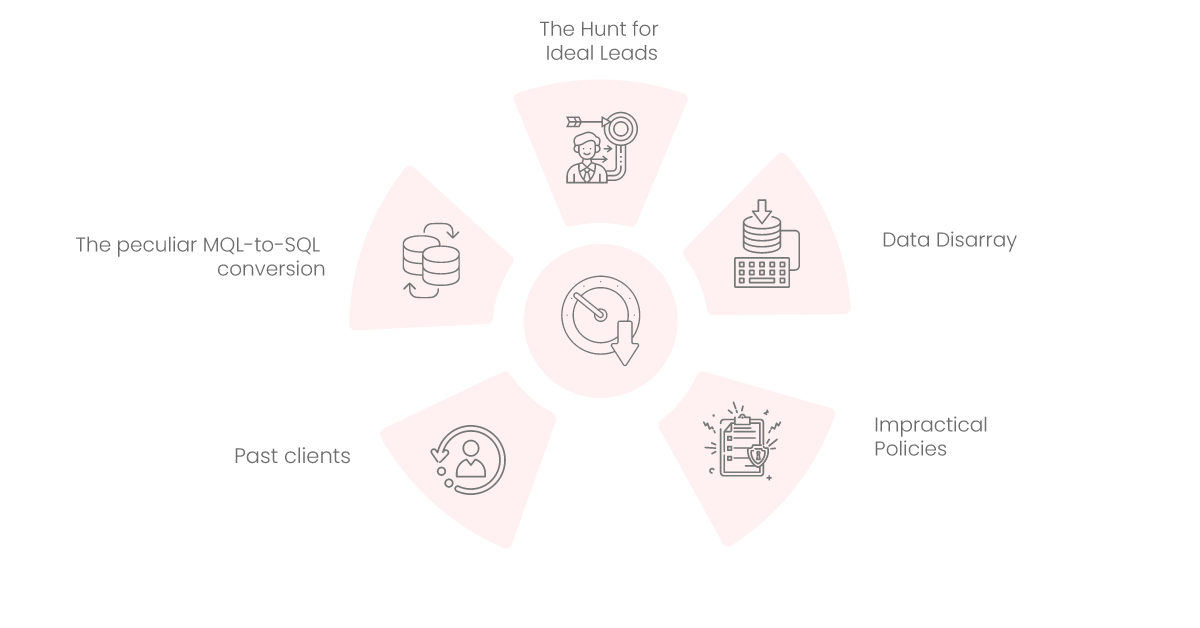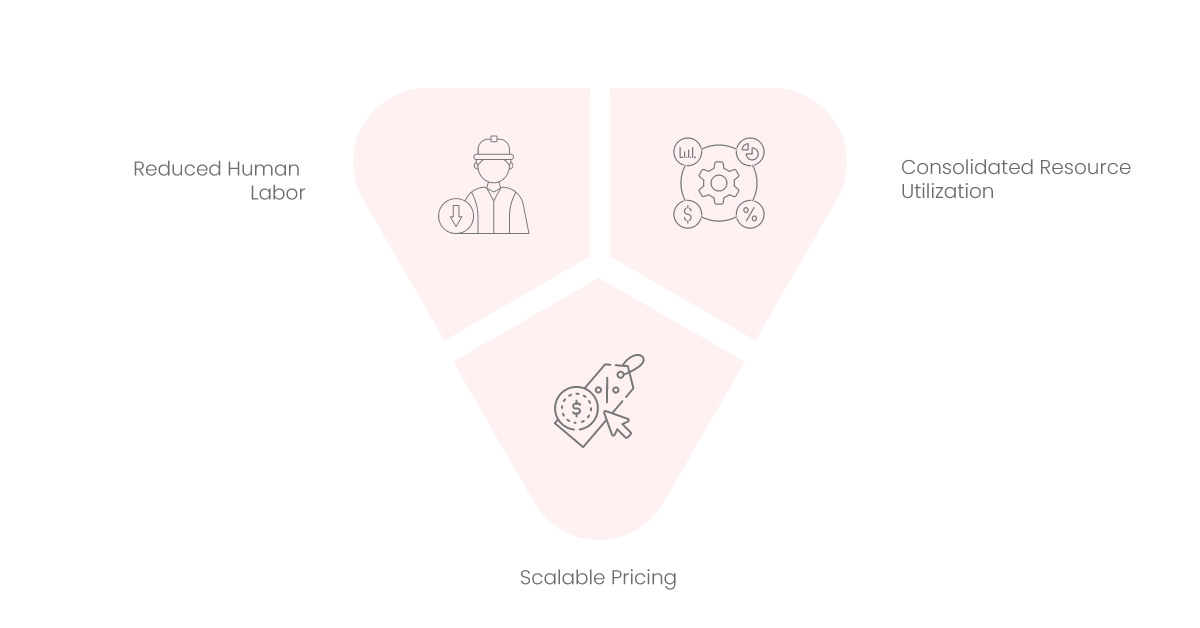Two points of attraction here are that iPaaS is a solution based on the cloud, and it offers sufficient flexibility between services to provide organizations with the choice they want in their own particular integration needs. Hybrid integration platforms seamlessly connect cloud-based apps with on-premise systems to make the overall business operations more streamlined and efficient.
Solution: If you are eager to enhance your way of data sharing and automate more business processes, then iPaaS is something that could be a perfect game-changer for your businesses as it will help you develop into the next modern era. Today we will find out how to scale the business with iPaaS, particularly in a multiplication sales environment, and all about benefits, and more.
Aonflow iPaaS – Free for First 3 Months!
Build and run up to 1,500 transactions monthly with no cost. No payment info needed!
The Road to Sales Excellence with iPaaS
Sales optimization is the Holy Grail for companies aiming to grow. The key ingredients for achieving this include a deep understanding of clients and intelligent use of automation. However, many businesses face barriers that prevent them from reaching their full sales potential.
Some businesses argue that digitalization is creating a greater distance between them and their goals. Meanwhile, others struggle to deliver a coherent data set from different systems, hindering their ability to work seamlessly.
Fostering Team Cohesion: More team collaboration leads to more success and technology pulls in the strings across departments.
Increasing in Touch with Customers: The ability to consistently deliver exceptional customer experiences is predicated on having an understanding of consumer desires and behaviors.
Maximizing Data Value In modern commerce, data is king-fueling advancements and strategic decisions. It goes much beyond just the information.
These connections create an environment where teams thrive, customers are satisfied and information is openly shared; making success a tangible reality.
But what about sales teams? Although they undoubtedly have the noblest of intentions in meeting and exceeding goals, many are not. Sales reps have difficulty working the same position for a year: A staggering 70% of salespeople who stick with the job title longer than six months rarely meet their quotas, and “only about 15 percent make it to one year,” according to studies.
Other findings revealed that 61% of buyers believe the sales process is getting more difficult.
Because let’s be honest – the long sales cycle is a problem that you need to solve. While you may not be able to turn a ten-month marathon into a ten-day sprint, it is virtually certain that significant progress can still be made.
We may not be miracle workers, but we can help bring the sales cycle down from a grueling ten months to something hopefully more reasonable – five or six months. The covert tool? proper operation by utilizing automatic processes to unleash the tremendous power of information. Without this mindset, sales teams will be overwhelmed with an infinite amount of paperwork and endless possibilities slipping through their fingers.
Well, what are those usual suspects that tend to slow down a sales cycle?
Data Disarray: Think of a treasure hunt but instead of seeking to find hidden riches and gold, you are saying “HEY-O! Bring me all the data from over here as well for comparison this time,” with no thrill or excitement attached.
Impractical Policies: Needless to say, salespeople dread when they cannot easily maneuver through rigid protocols that only drag out the cycle and test even their strongest resolutions.
Past clients: on occasion, sales reps get confused to find all of a sudden they may dissuade possible prospects during a sale.
The peculiar MQL-to-SQL conversion: Often compared to navigating a maze without directions, the process of going from marketing-qualified leads (MQL) to sales-qualified leads (SQL) can be just as frustrating.
The Hunt for Ideal Leads: Ultimately, the desire to locate a similar needle in a haystack and search through an ocean of prospects will create missed opportunities.
You can bring order to the chaos in different applications and systems and get it buttoned up well through varied iPaaS solutions.
Sales teams can make use of iPaaS, which acts as a chameleon within the cloud and connects thousands of apps with much-needed access to information on relevant platforms where sellers must reach sales goals. For such businesses, iPaaS forms the sturdy base upon which they can create several useful solutions- Be it in automating their marketing and CRM or creating specific bridges between analytics aids and business intelligence.
Why Use iPaaS for Sales and Scaling?
Picture your sales crew gliding smoothly forward by having everything that they require. IPaaS brings this vision to life and enables a unified sales environment. It ensures that your solution systems like an inventory management system and CRM, e-commerce platform marketing automation tool, or customer support software for sales are efficiently consolidated.
Use Cases
Here, we will read about some cases highlighting how iPaaS has made an impact on sales operations for companies.
Use Case 1: Online shopping
Business: A thriving e-commerce startup.
Issue: The CRM system and their e-commerce platform were not working in sync. We found order delays were often a result of disparate data.
Resolution by iPaaS: The company connected its CRM system with an e-commerce platform and automated the data flow between them using an iPaas solution.
As a consequence, order processing time was reduced by half an hour while client info and revenues soared.
Use Case 2: The Master Business – Across Multiple Channels E.g., A large retailer with a presence both online and physical
Issue: It was a challenge for the business to keep inventory in sync across all channels of sale. But there was a very high problem of both understocking and overstocking.
iPaaS Solution: iPaaS was designed to keep real-time inventory in sync across all channels.
Results: Stockouts were eliminated and overstock was decreased due to improved inventory levels. Customers had a seamless experience purchasing in-store and online, with sales revenue increasing.
Aonflow is the leading integration platform.
You can kick-start by integrating your first-ever workflow in just a matter of minutes.
The Power of iPaaS to Optimize and Scale
The iPaaS provides businesses with a higher level of sales optimization toolkit and capabilities.
1. Synchronizing data: With iPaaS in place there is surety for a seamless flow of campaign information through your sales tools to prevent disparate instances and also ensure consistent deployment each time with up-to-date info for optimization by your shopping force.
2. Workflow Automation: Say goodbye to repetitive administrative tasks and manual input of data. IPaaS does this by automating laborious functions to allow your gross sales force to deal with what they do greatest, promoting.
3. Real-Time Insights: Your sales team can make informed decisions in the field thanks to real-time analytics and insights made available by iPaaS.
4. Scalability: iPaaS solutions are scalable and thus can grow as your company grows. Whether you are a startup or an existing business, the iPaaS can conform to your needs.
iPaaS for Sales Force
The sales force is the center of any organization that generates its revenue. This is how iPaaS simply helps them.
1. Less time spent on admin tasks is another benefit of iPaaS over the cloud, as it simplifies sales processes and removes unnecessary responsibilities.
Features: Salescrew can now focus on closing deals and not entering data!
2. Higher Data Quality: With iPaaS, the information that you have in your CRM is not only up to date but correct. Data-driven sales teams can trust their data, which equates to better prospecting and customer interactions.
3. Real-time Collaboration: Sales, marketing, and customer support teams can collaborate in real time using iPaaS. Client experience becomes more consistent because everyone agrees.
The Advantage of Cost Saving
In business, every dollar counts. iPaaS not only helps increase revenue but also serves as a cost-effective solution.
Reduced Human Labor: iPaaS automation functionality removes humans from data input and management, resulting in a reduction of labor costs.
Consolidated Resource Utilization: Once again reintegrating your sales tools back to their initial state can result in wasted resources.
Scalable Pricing: Built into its flexible and scalable pricing, you pay for as much or as little as an iPaaS provider requires.
Speeding Up Lead Discovery and Qualification
A well-trodden path to improve sales metrics is a combination of marketing and Customer Relationship Management (CRM) automation. Sales and marketing processes are synched, merging sales teams with the ability to act quickly on prospects based on their interactions with previous efforts run using marketing automation. This has much more automatic sales cycles, meaning that marketing can follow up on those leads based on matching requirements and send them certain emails or promotions. The result is better conversion rates, shorter sales cycles, and more money.
Recognizing Upsell and Cross-Sell Opportunities
Integrating e-commerce data with CRM will allow sales teams to receive invaluable customer information that may include buying intent. Consequently, this data can later be used for upsell and cross-sell opportunities. Sales personnel can suggest relevant items or complementary products to faithful buyers on the known level, while special offers may be extended at this juncture to certain customers through their purchase track record and likes. By doing this your profits increase and your customer allegiance to the friendzone level.
Streamlining the Purchase Process
So, for companies that regularly send out contracts, it makes sense to integrate e-signatures with CRM. IPaaS helps in the smooth integration of important data and thereby automates the sharing and acceptance of contracts regarding sales opportunities. The use of iPaaS-based workflow automation that initiates actions and then completes tasks based on established sales criteria. To ensure that contracts are executed on time, this integration speeds up the contract process, removes human data entry, and reduces errors as well as automatically sends out reminders and alerts.
Accelerate Quotations and Reduce Errors
Sales cycles often get unnecessarily bogged down in manual administrative work. Integrations that connect sales quotations as part of Configure, Price Quote (CPQ) procedures streamline the quotation process and lessen errors. Automation eliminates the need for human efforts in searching and entering data by auto-generating information-enriched quotations. It shortens sales cycles and speeds up processes. In other words, by cracking iPaaS technology with CRM and CPQ workflows you assuage the accuracy of quotes by overlaying key data such as price, purchase history, or customer demographics. By eliminating manual research, quotation creation is promised to be faster and more precise.
Immediate Sales Pipeline Insight
Integrating CRM and Business Intelligence (BI) dashboards with iPaaS can provide sales teams with deeper insights into their sales funnel. By combining data on customer interactions, lead creation, and conversion rates, the available dashboards offer a comprehensive view of sales performance. This data-informed approach allows sales teams to identify patterns and trends, develop strategic plans, and optimize their sales process. For example, if the data shows that a certain type of lead converts at a higher rate, the sales team can focus on acquiring more leads of that type.
Sales Optimization & Scalability: The Coming Future of iPaaS
As technology evolves, iPaaS can enhance sales.
Artificial Intelligence: iPaaS works seamlessly with AI to learn even more personalized and predictive sales strategies.
IoT integration: iPaaS will step up as an important part of integrating all that new data in sales processes — the Internet of Things (IoT) and being able to derive value out of those connected devices is another massive contributing factor for sales optimization.
Advanced Analytics: Apparently, the advanced analytics provided by iPaaS continue to support sales teams and empower them with more accurate client behavior analysis or trends.
Conclusion
Sales optimization and scalability are a must, not just as business objectives. All of this has the potential to be transformed by your use of iPaaS – a silver bullet that can open opportunities: from new sales through better customer experience, cost savings, and productivity. These are the same use cases we highlighted previously that show how iPaaS has so much potential to transform your processes.
As we move forward, iPaaS will evolve further to make use of even more innovative functions for sales representatives and help you drive profits. Embrace the power of iPaaS, and watch your sales soar to new heights.
Aonflow iPaaS – Free for First 3 Months!
Build and run up to 1,500 transactions monthly with no cost. No payment info needed!


